How to Harvest Peas for Quality and Yield
August 18, 2025Discover our practical tips for a successful organic pea harvest. Learn when to start, how to set combines, and manage residues for better quality and higher yields.
Read articleDiscover our practical tips for a successful organic pea harvest. Learn when to start, how to set combines, and manage residues for better quality and higher yields.
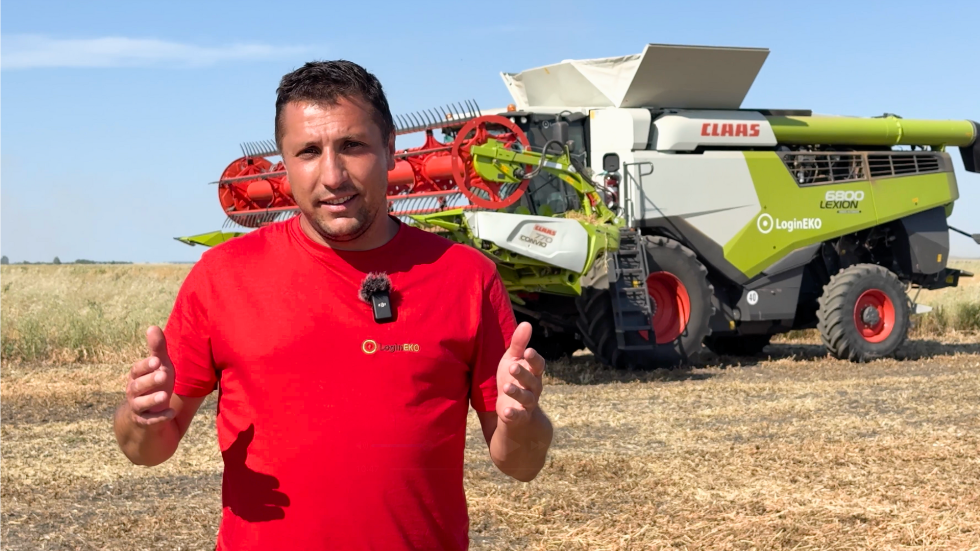
This season at LoginEKO, we sowed peas on 640 hectares. In this article, we’ll take you behind the scenes of our NS Mraz variety harvest in Northern Banat. From sowing to grain handling, here’s a step-by-step look at how we protect grain quality and maximize yield on our organic farm.
Before we go into the harvest itself, it’s important to mention that a quality harvest starts already at “step 0”, a quality seedbed preparation. For peas, we prepare the soil carefully to ensure uniform emergence and healthy early growth.
For example, the field shown in our video was sown on October 18.
Why this timing?
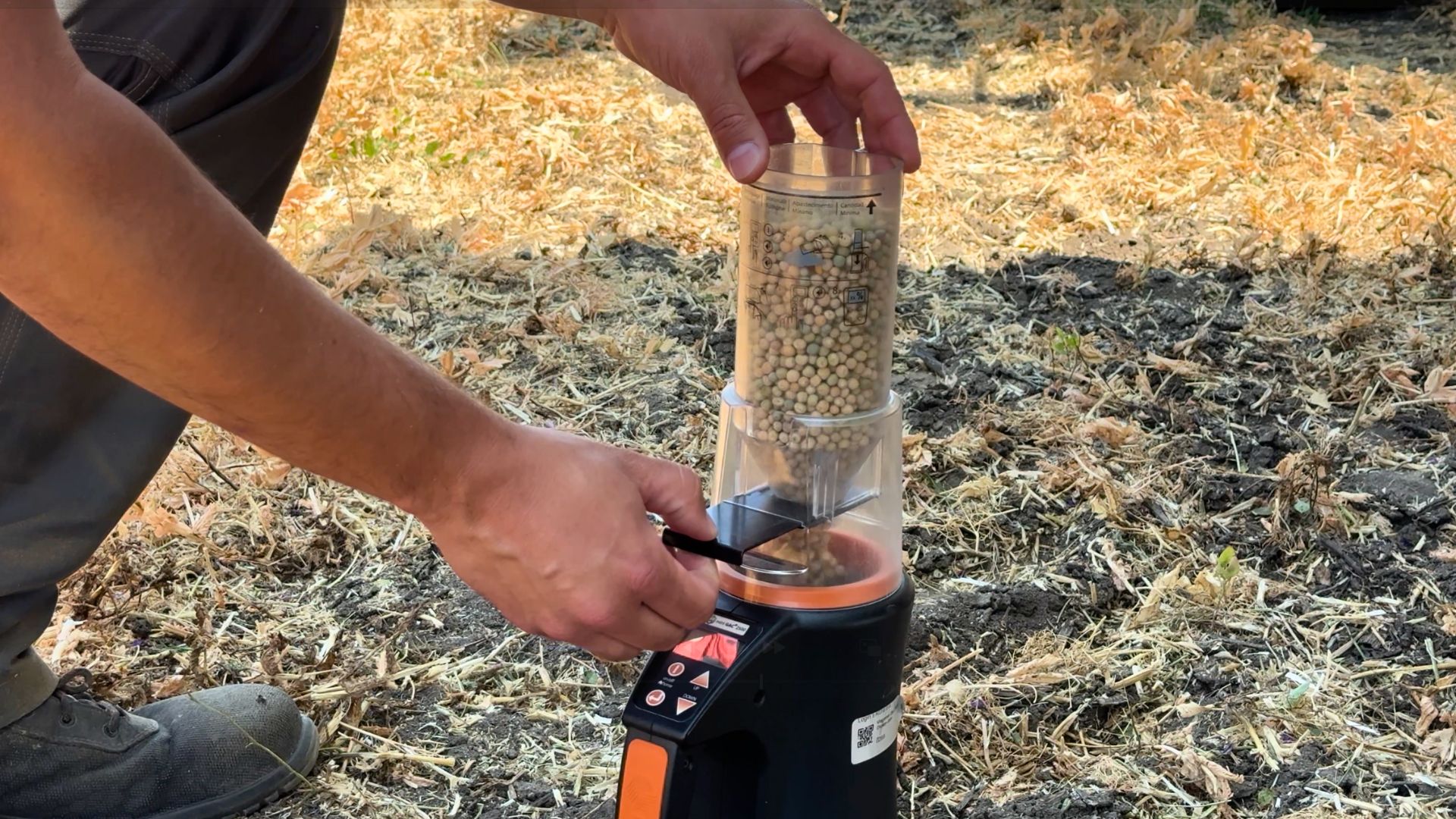
Timing is everything when it comes to harvesting organic peas.
How do we determine the right moment?
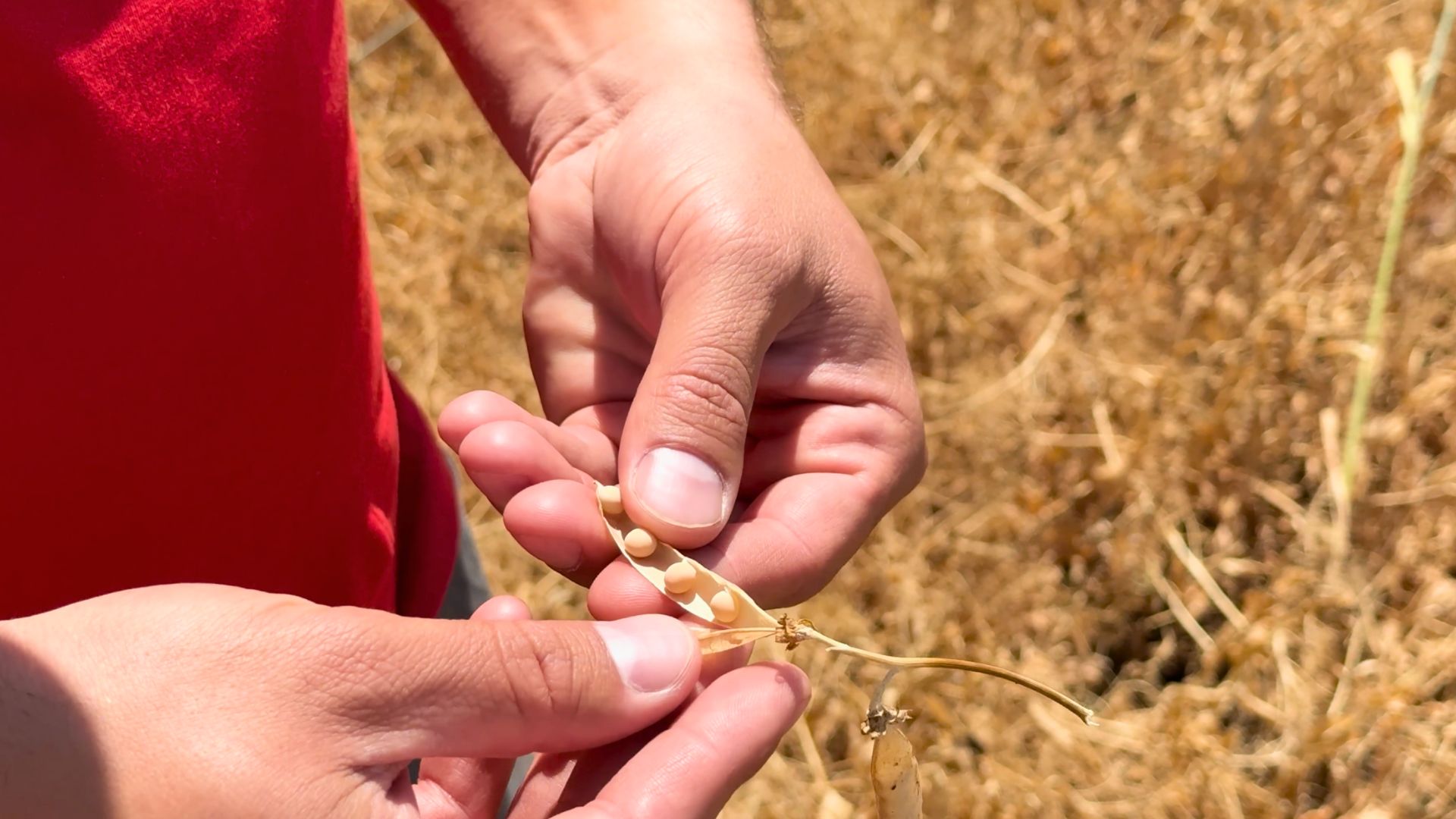
Starting harvest too late risks yield loss due to pod shattering and lodging. Rain after maturity can cause lodging, making harvesting difficult and causing further losses. That’s why constant monitoring is key.
We used two different combines to harvest peas. First is our Claas Lexion 760, a hybrid with rotors, and a Claas Lexion 6800 with a straw walker.
Key things to consider when setting up the combine for harvesting peas are:
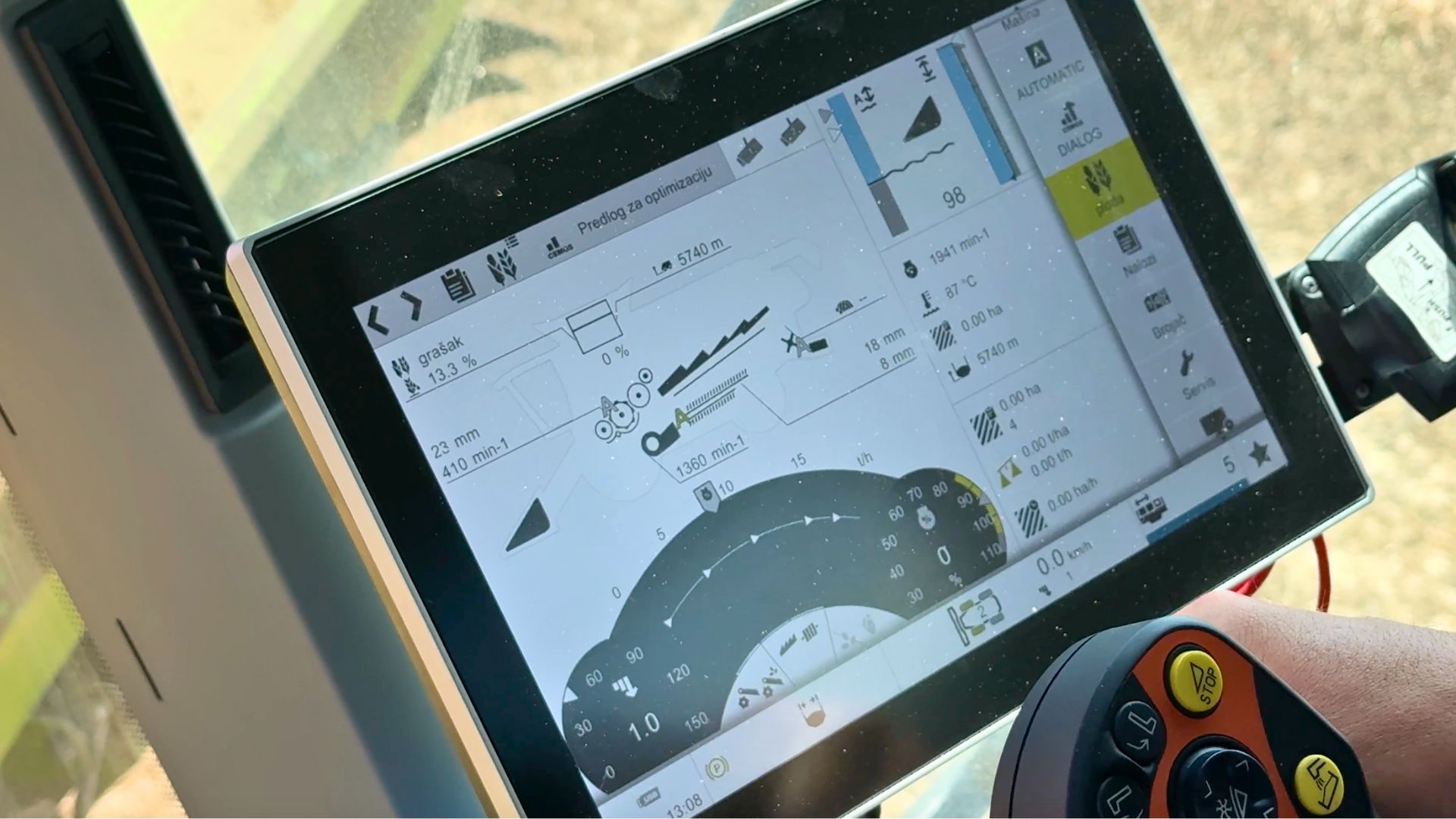
But there are some trade-offs when it comes to using the Seed Terminator.
It adds mechanical load, reducing harvesting speed to about 4.5-5.5 km/h instead of 7-8 km/h.
While it limits daily harvesting capacity, it preserves yield and reduces weed pressure long term.
Each combine has predefined crop settings, but since part of our harvest is saved for farm-saved seed, we also fine-tune combine settings to minimize mechanical damage and ensure high germination rates.
Though we farm organically in all of our fields, we have a proactive risk management strategy with risk zones—field strips potentially contaminated by neighboring conventional farms.
Our Risk Rating Plots plan evaluates the plot size and shape, the proximity to neighboring conventional farms, neighboring crop types and positioning, and estimated risk percentage. Based on this criteria, we categorize them by risk and tailor the precautionary measures throughout the season.
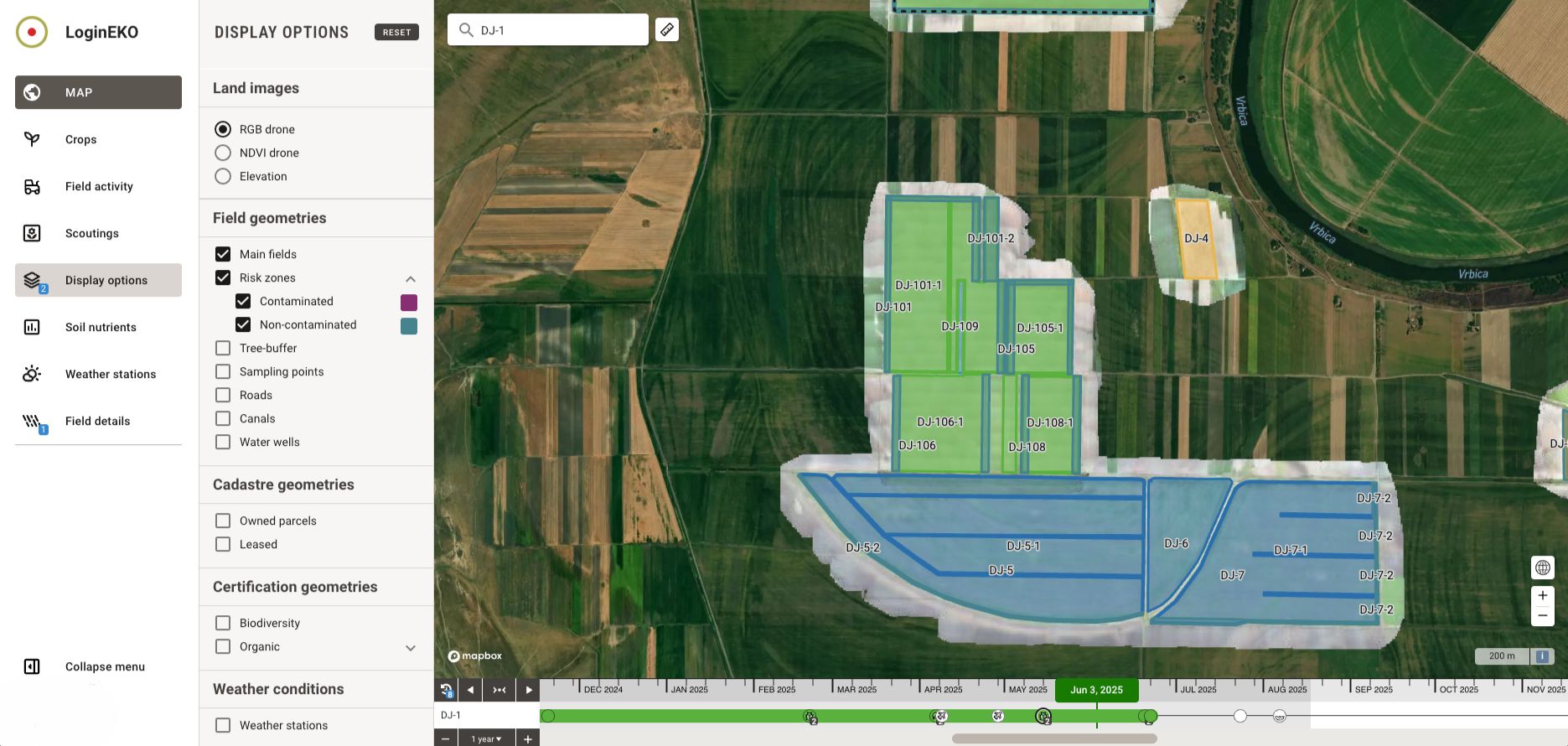
.
Here’s how we approach them during harvest time:
The Class Lexion 6800 combine is equipped with a Convio Flex header, which has a 7.7-meter working width and features a rubber belt designed to reduce grain loss during harvest. This setup helps us maximize the amount of peas we collect while minimizing losses in the field.
After harvesting, all crop residues, such as straw, are fully chopped by the combine’s chopper and then incorporated back into the soil to support soil health and fertility.
Grain unloading is carried out directly in the field, and every unload is recorded through our Farming Software, ensuring transparent and efficient farm management.
Importantly, during the pea harvest, we avoid additional handling steps such as using grain carts. Passing peas through augers or extra transfer equipment can mechanically damage the seeds, which is particularly detrimental because we save a portion of our harvest as farm-saved seed for the next sowing. By minimizing seed handling, we protect seed quality and preserve germination rates.
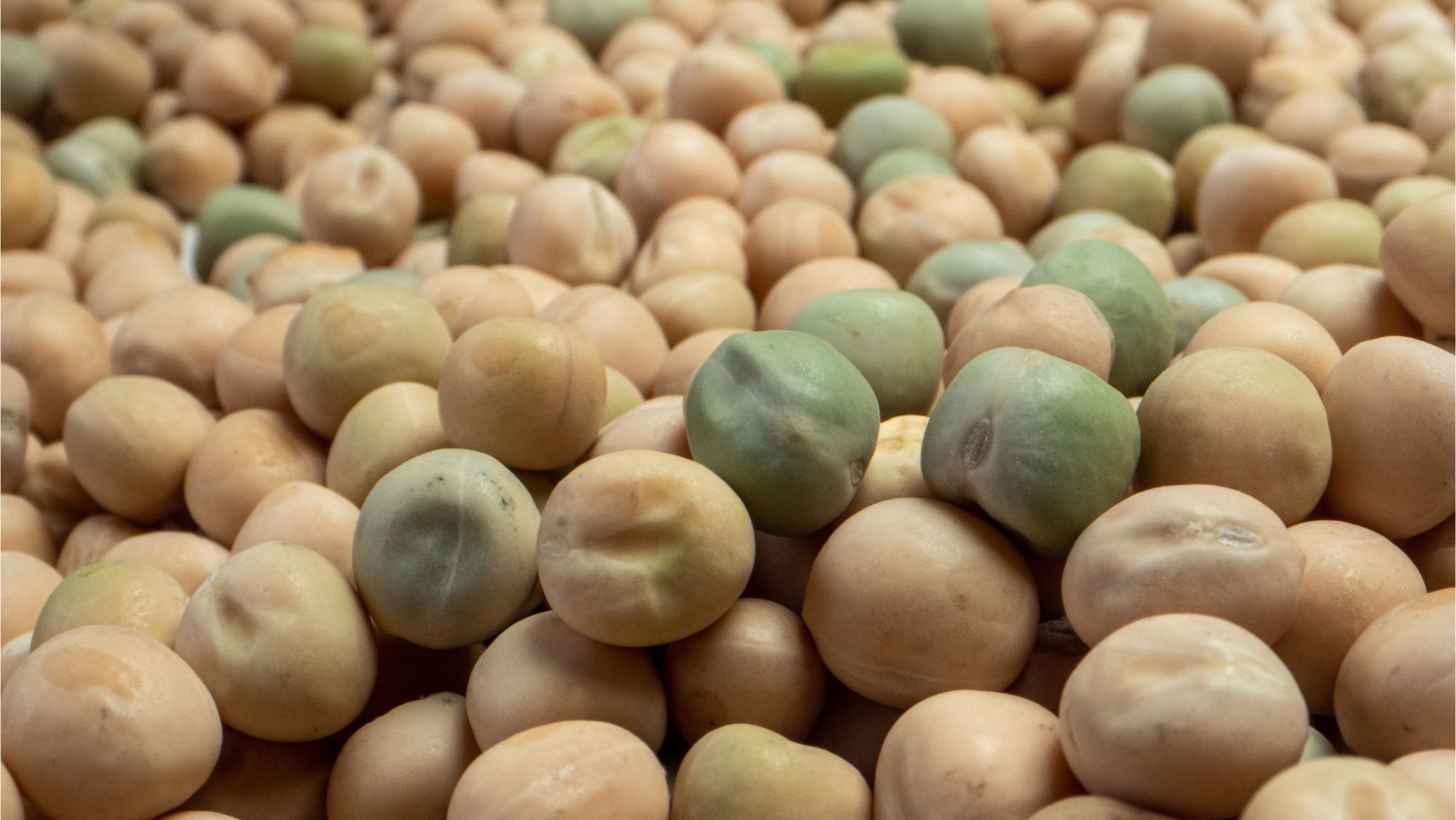
Harvesting peas as a large-scale organic farm demands attention to detail—from timing, machine setups, contamination risks, and careful handling. Every season teaches us something new. Each harvest teaches us something new, working toward methods that protect yields today while building the foundation for long-term sustainability.
Discover our practical tips for a successful organic pea harvest. Learn when to start, how to set combines, and manage residues for better quality and higher yields.
Read articleDiscover how our solutions reveal the exact fields your food’s ingredients came from, with detailed crop history and farm activity all in one place.
Read articleAhead of this year’s flax harvest, we tackled late-stage weeds with the Top Cut Collect. Learn how we cleaned up the field and why it was worth it.
Read article